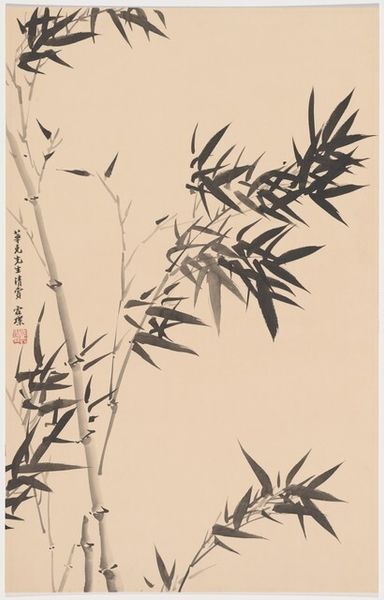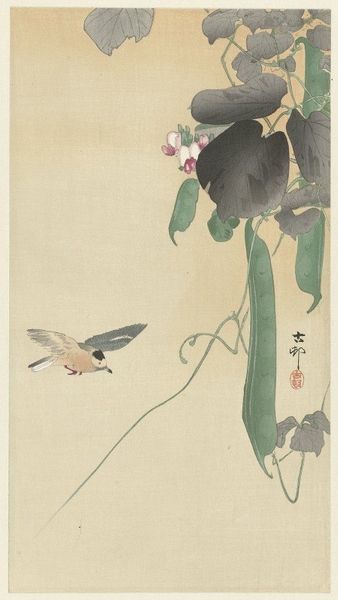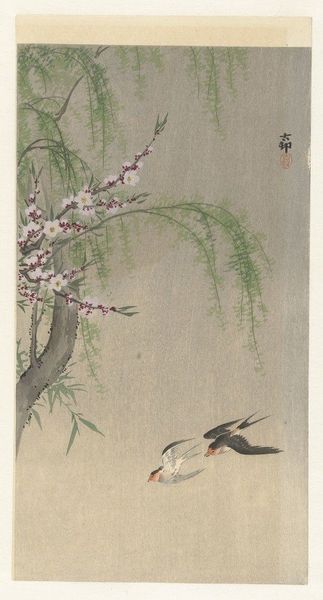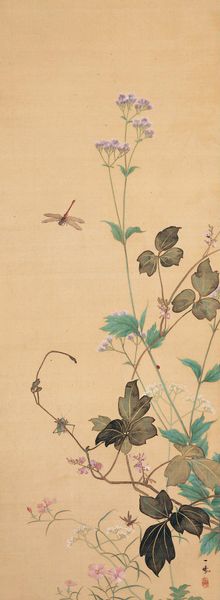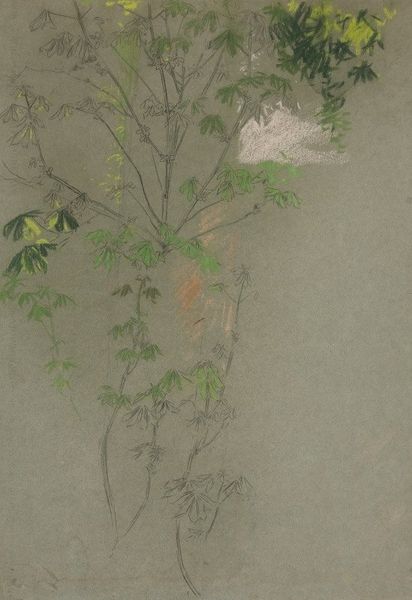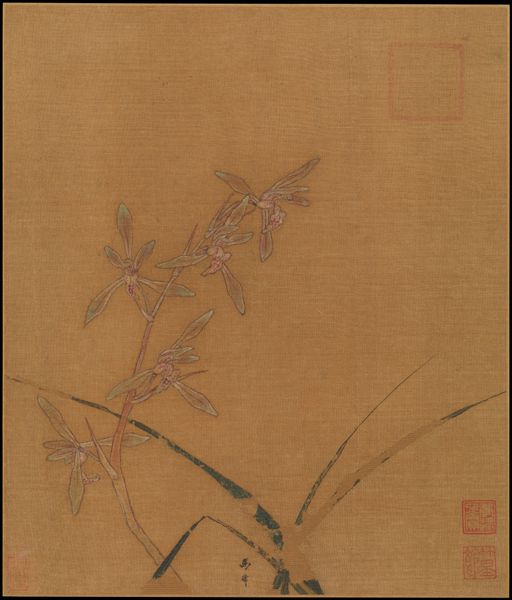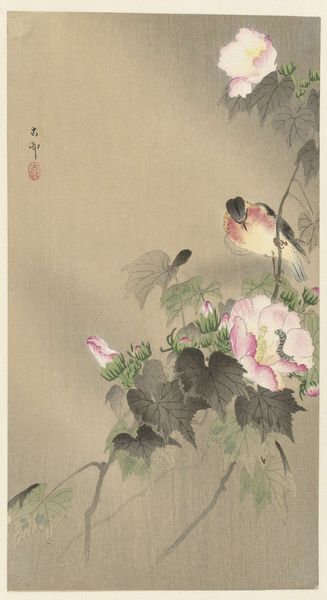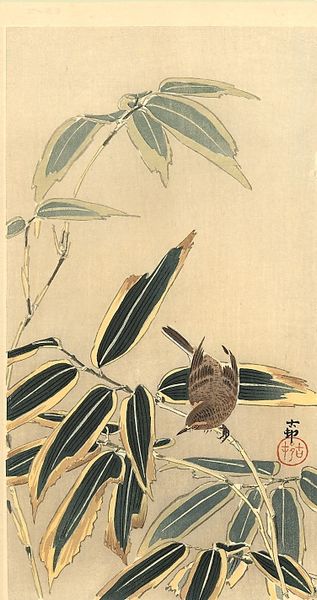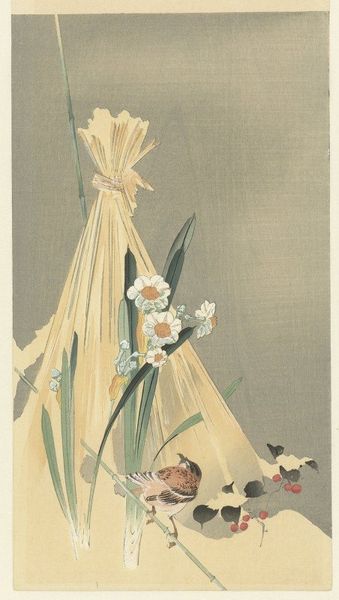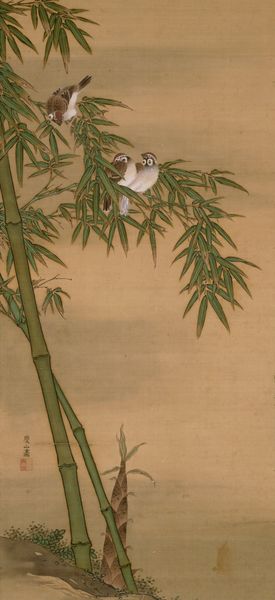
print, ink, woodblock-print
#
water colours
# print
#
grass
#
asian-art
#
landscape
#
ukiyo-e
#
ink
#
woodblock-print
#
plant
Copyright: Public domain
Curator: This print captures a sprig of bamboo, punctuated by a single snail clinging to a leaf. It’s an ink and watercolour woodblock print. Editor: The stillness is striking. The muted grey background seems to amplify the detailed rendering of the bamboo and that solitary snail. There’s a definite contemplative mood to it. Curator: This work is attributed to Ohara Koson, also known as Shoson, a Japanese artist active in the late 19th and early 20th centuries. Koson, like many artists of his era, navigated shifting cultural landscapes, catering to Western tastes while drawing upon traditional Japanese artistic conventions like *ukiyo-e*. He initially worked in what we might term a very classically Japanese style. However, he also adapted to, and for a time primarily created prints and paintings intended for the foreign market. Editor: So, how do you view Koson's relationship to Western reception and the global art market? Given that his works were in high demand during a time when Japan was negotiating its identity on the world stage, might we also examine how "Japaneseness" itself was packaged and consumed? This becomes interesting when we start asking if the rise in appreciation of certain artists during certain times can be associated to Japan's rising imperialism. Curator: That is certainly a relevant interpretation here, and a position worth exploring, though here the artist focuses attention to natural observation and less in national ideology. This aesthetic can be understood as representing, even enacting, a wider concern for the value of observation within certain social circles. Koson had a wonderful capacity to distill observations into emotionally effective works. Editor: I suppose the way in which it captures such a seemingly mundane scene—a snail on a bamboo leaf—and elevates it through artistic rendering might suggest a deeper connection to concepts of naturalism or even animism. Curator: These intimate portrayals served both aesthetic and commercial functions in Koson’s time, acting within international currents that also shaped his work’s distribution and popularity. Editor: The conversation highlights the complex relationship between art, cultural exchange, and societal perceptions. Curator: Precisely, acknowledging that art's significance evolves, shaped by its creators, audiences, and the ever-changing narratives surrounding it.
Comments
No comments
Be the first to comment and join the conversation on the ultimate creative platform.
